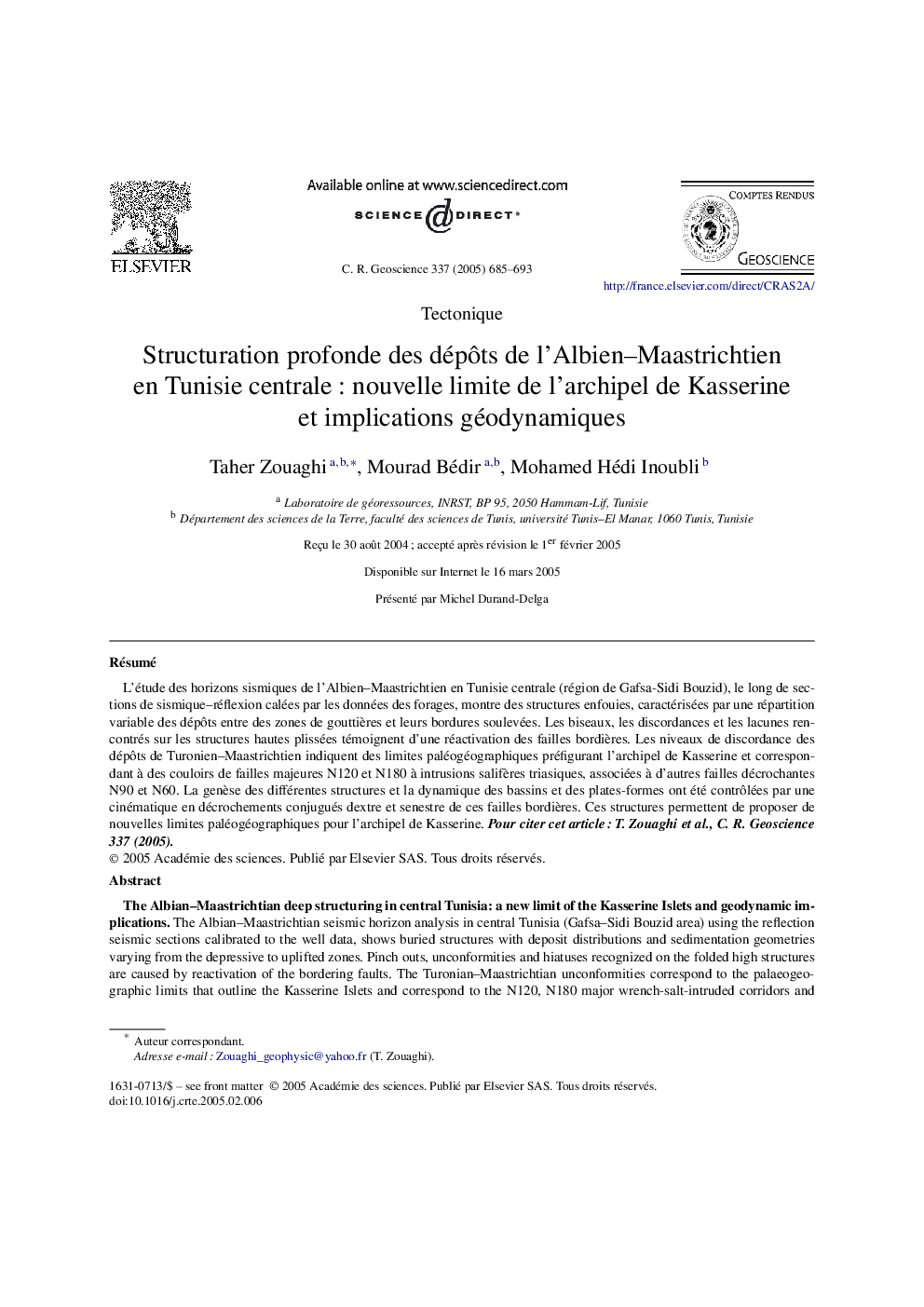| Article ID | Journal | Published Year | Pages | File Type |
|---|---|---|---|---|
| 9461804 | Comptes Rendus Geoscience | 2005 | 9 Pages |
Abstract
The Albian-Maastrichtian seismic horizon analysis in central Tunisia (Gafsa-Sidi Bouzid area) using the reflection seismic sections calibrated to the well data, shows buried structures with deposit distributions and sedimentation geometries varying from the depressive to uplifted zones. Pinch outs, unconformities and hiatuses recognized on the folded high structures are caused by reactivation of the bordering faults. The Turonian-Maastrichtian unconformities correspond to the palaeogeographic limits that outline the Kasserine Islets and correspond to the N120, N180 major wrench-salt-intruded corridors and associated N90, N60 strike-slip faults. Formation of the different structures and evolution of the basins and platforms were controlled by conjugate dextral and sinistral strike-slip movements. These structures allow new palaeogeographic limits of the Kasserine Islets to be identified. To cite this article: T. Zouaghi et al., C. R. Geoscience 337 (2005).
Keywords
Related Topics
Physical Sciences and Engineering
Earth and Planetary Sciences
Earth and Planetary Sciences (General)
Authors
Taher Zouaghi, Mourad Bédir, Mohamed Hédi Inoubli,
